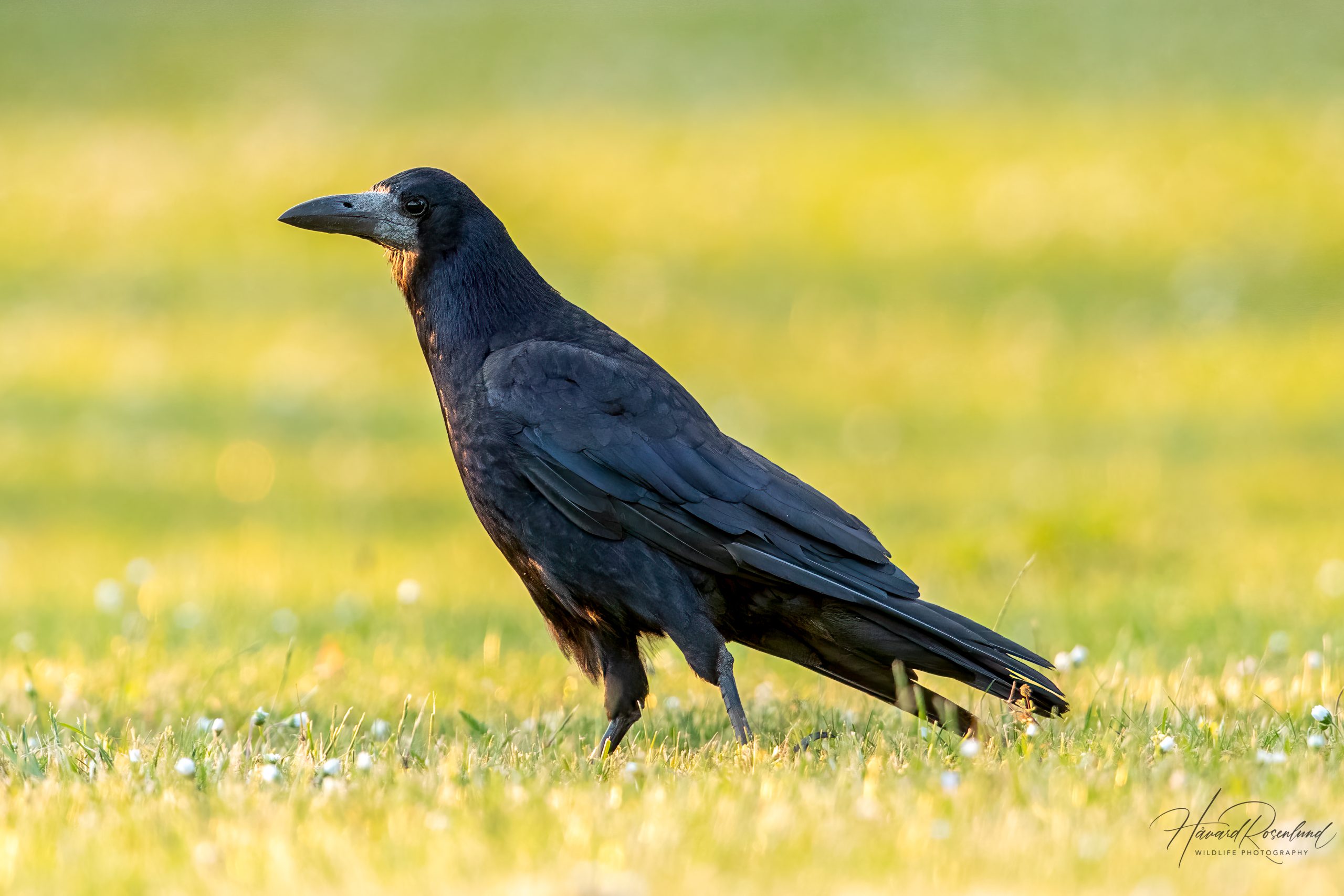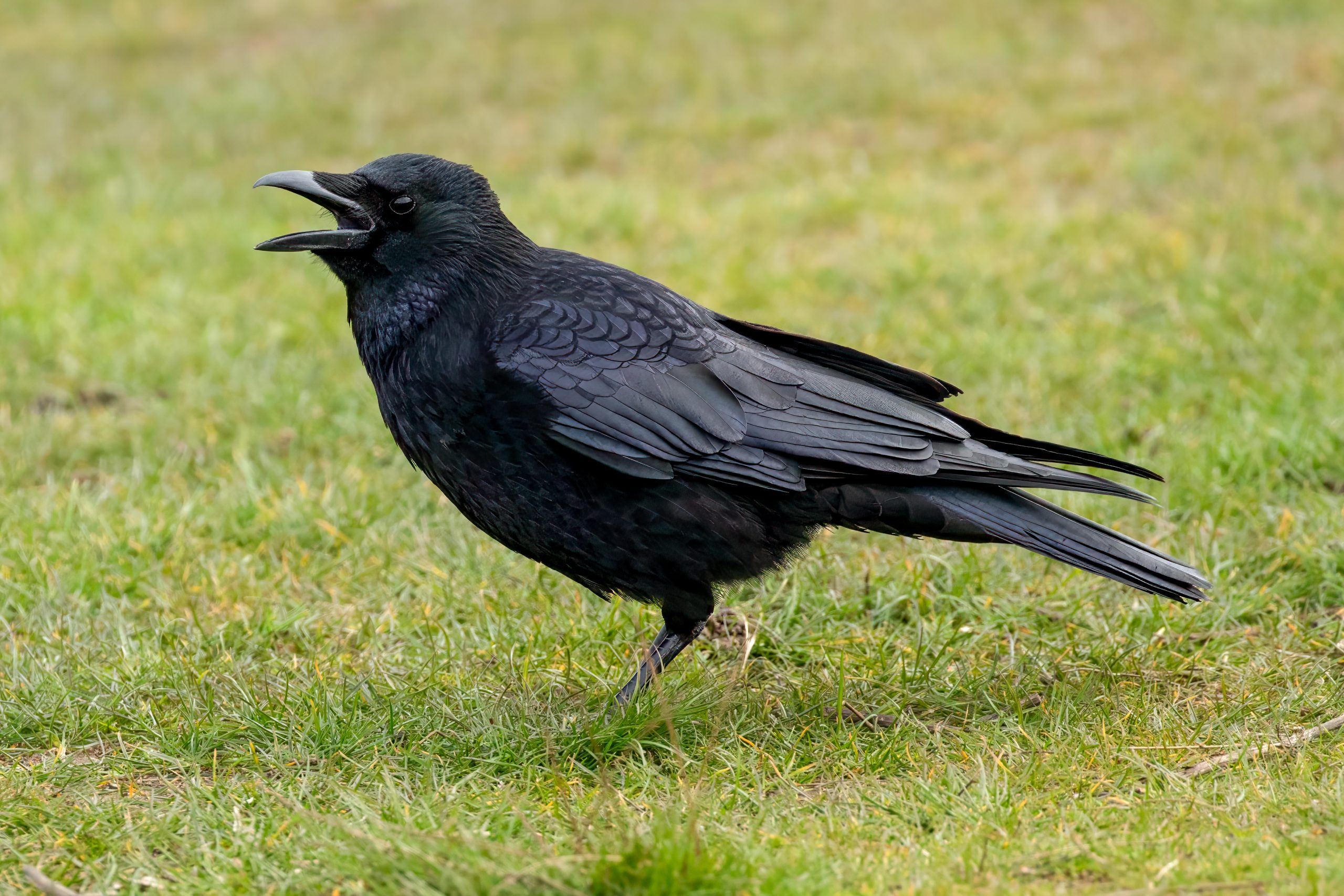Description
The rook (Corvus frugilegus), is a member of the Corvidae family with a broad range, inhabiting large portions of Europe and Asia. It is known for its striking black plumage and sociable nature. Adult rooks are easily recognized by their distinctive bare grey-white skin around the base of their beaks and their purplish-black feathers with a glossy sheen. They are medium-sized birds, measuring about 44-46 cm (17-18 inches) in length, with a wingspan of 81-99 cm (32-39 inches). Young rooks can be mistaken for carrion crows (Corvus corone), as they still have feathers at the base of their beaks, but rooks can be distinguished by the beak being thinner and more pointed.
Diet & habitat
Rooks thrive in open farmlands, grasslands, and areas with scattered trees, often near human settlements. They are highly adaptable and can also be found in parks and urban areas. Their diet is omnivorous, consisting mainly of insects, earthworms, seeds, fruits, and small mammals. They are also known to scavenge human food waste and carrion. Rooks employ a variety of feeding techniques, such as probing the soil with their beaks for insects and worms or scavenging from rubbish bins. They often forage in flocks, which can be quite a spectacle.
Behavior
Rooks are highly social birds, often seen in large flocks outside the breeding season. They exhibit complex social behaviors, including cooperative feeding and communal roosting. Rooks communicate through a range of vocalizations and visual signals, which help maintain social bonds within the flock. Their gatherings, called rookeries, can number in the hundreds, providing safety in numbers and increased foraging efficiency.
During courtship, males perform elaborate displays, including bowing and offering food to the females. They are also known for their playful behavior, such as sliding down snowy slopes or engaging in aerial acrobatics.
Migration
Rooks exhibit partial migration, with northern populations tending to migrate southwards during the winter months. Migration distances vary; some populations may only move short distances to find food, while others travel several hundred kilometers. The timing of migration typically depends on food availability and weather conditions, usually occurring from October to November and returning to breeding grounds in early spring.
Nesting
The breeding season for rooks starts in early spring. They are colonial nesters, often forming large rookeries in tall trees. The nests are built from twigs and lined with softer materials such as grass and feathers. Rooks are known for their cooperative breeding behaviors, sometimes helping each other to build nests and care for young.
Females lay between 3 to 5 eggs, which are incubated for about 16-18 days. Both parents share incubation duties, although the female does most of the work. After hatching, the chicks remain in the nest for about 28-30 days before fledging. Rooks usually raise one brood per year.
Status
The rook is currently listed as least concern by the IUCN. This status reflects their wide distribution and large, stable population. However, local declines have been noted due to habitat loss, changes in agricultural practices, and persecution. In some regions, they are considered pests due to their scavenging habits, which can bring them into conflict with humans.









